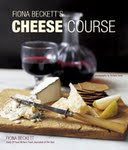
The other cheesy highlight of my trip to the Lebanon was a wickedly delicious dish called Knaafeh which is commonly served for breakfast. It’s a bit like a cheesecake based on a rubbed pastry called mafrookeh and topped with a stringy cheese which tastes like mozzarella.
It is generally served with a syrup made from orange flower water and sometimes in sesame bread which would obviously add a fair bit to the calorific overload.

The pictures are of one we tasted in Patisserie Douaihy in the Place Sassine, a really friendly pastry shop and café.
I was planning to try and make it when I got back but having studied this recipe from Anissa Helou, a food writer who leads trips to the Lebanon, I can see it’s not that straightforward - unless you can order the pastry from a Lebanese shop. I may just have to head back to Beirut . . .








